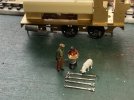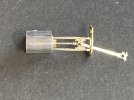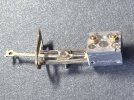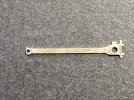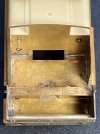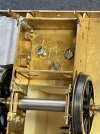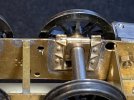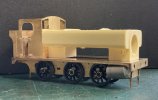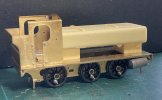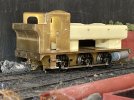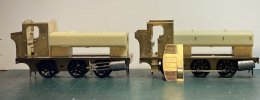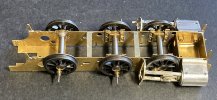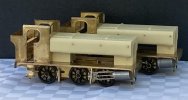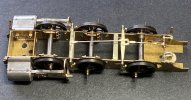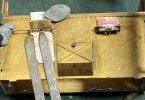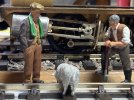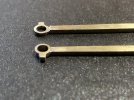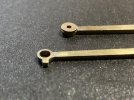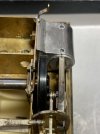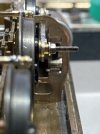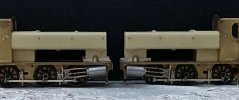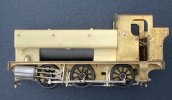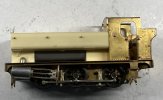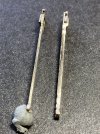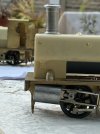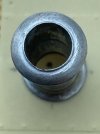Both locomotives’ chimneys have been fitted along with an abortive attempt to Araldite the rear tank supports to the footplate. My understanding is that GWR painting policy is all vertical surfaces above the footplate other than the smoke box were green. This means, can anyone confirm this, that these brackets would be green and difficult to mask off if attached to the footplate. I plan to fix these to the tank only and spray with the tank.
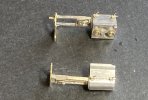
The motion was dismantled, and the cylinder assemblies removed. Drain cocks were fitted and the cylinder attachment bolts shortened which will give a few more millimetres space should my customer decide to fit another speaker in this space.
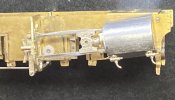
I reamed out the relocated plunger pick up holes to test fit the insulation bushes, one of the etched holes for these is just visible above and behind the rear drain cock. This corresponds nicely with the fold down steam chest rear/chassis spacer so was of no use. Interestingly, the remaining etched holes are larger than the insulation bushes. I wonder these can be provided in black. The picture shows that the bush just fits in its new location tight against the slide bar support bracket.
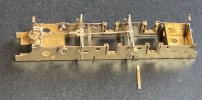
The stripped-down frames were given a good scrub with a toothbrush and “Shiny Sinks” which removes 99% of all known germs, sorry, I meant flux. This also removes any bits that aren’t properly attached, hence the small chassis spacer which will be reattached.
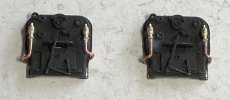
A start on the backheads sees the oil shelf, door operating mechanism and clack valves attached. I cut off the straight cast brass pipe on these and drilled a shallow hole to insert copper wire for the feed pipe. The injectors for this class fed through the cab front curving immediately upwards to the clacks. The copper looks more authentic than the cast brass extension to the clacks which would have been impossible to bend to the correct contour.
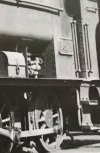
This picture of 1371 shows the outlet of the injector hard up against the cab front. Also discernible is that the drain runs through the footplate and not over the side as with the preserved 1369. I wonder if this was modified and when? The picture also shows the tight confines where the injector is fitted and that the water inlet valve from the tank faces backwards towards the cab.

